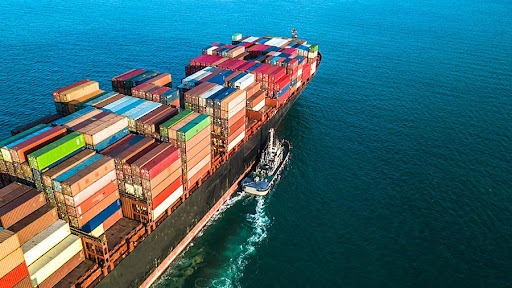
Lebanon’s Exports fluctuated despite exchange rate advantages: 2021-2023
| EXPORTS SPECIAL | ||||||||
| 000s of USD | Year 2021 | Year 2022 | change in value | % Change | Year 2022 | Year 2023 | change in value | % Change |
| Live animals; animal products | 39,560 | 11,372 | (28,188) | -71% | 11,372 | 20,275 | 8,903 | 78% |
| Vegetable products | 265,071 | 315,878 | 50,807 | 19% | 315,878 | 206,347 | (109,531) | -35% |
| Animal or vegetable fats and oils | 32,293 | 27,998 | (4,295) | -13% | 27,998 | 48,136 | 20,138 | 72% |
| Prepared foodstuffs; beverages, tobboaco | 404,363 | 389,508 | (14,855) | -4% | 389,508 | 376,844 | (12,664) | -3% |
| Mineral products | 10,911 | 16,719 | 5,808 | 53% | 16,719 | 14,753 | (1,966) | -12% |
| Products of the chemical or allied industries | 343,210 | 369,293 | 26,083 | 8% | 369,293 | 295,876 | (73,417) | -20% |
| Plastics and articles thereof; rubber | 117,285 | 387,803 | 270,518 | 231% | 387,803 | 104,911 | (282,892) | -73% |
| Raw hides and skins, leather, furskins | 9,387 | 10,974 | 1,587 | 17% | 10,974 | 9,713 | (1,261) | -11% |
| Wood and articles of wood; wood charcoal; cork | 15,003 | 13,763 | (1,240) | -8% | 13,763 | 17,790 | 4,027 | 29% |
| Pulp of wood; paper and paperboard | 94,682 | 111,880 | 17,198 | 18% | 111,880 | 85,678 | (26,202) | -23% |
| Textiles and textile articles | 46,213 | 46,611 | 398 | 1% | 46,611 | 44,194 | (2,417) | -5% |
| Footwear, umbrellas, artificial flowers | 4,742 | 8,113 | 3,371 | 71% | 8,113 | 6,247 | (1,866) | -23% |
| Articles of stone, plaster, cement, glass | 25,358 | 32,572 | 7,214 | 28% | 32,572 | 24,393 | (8,179) | -25% |
| Pearls, precious stones and metals | 1,017,738 | 752,808 | (264,930) | -26% | 752,808 | 760,440 | 7,632 | 1% |
| Base metals and articles of base metal | 463,856 | 489,487 | 25,631 | 6% | 489,487 | 428,875 | (60,612) | -12% |
| Machinery; electrical instruments | 302,331 | 343,106 | 40,775 | 13% | 343,106 | 387,321 | 44,215 | 13% |
| Vehicles, aircraft, vessels, transport equipment | 66,977 | 44,788 | (22,189) | -33% | 44,788 | 46,018 | 1,230 | 3% |
| Optical, photographic,medical, musical instruments | 12,382 | 15,973 | 3,591 | 29% | 15,973 | 19,648 | 3,675 | 23% |
| Arms and ammunition; parts and accessories | 1,610 | 1,964 | 354 | 22% | 1,964 | 1,238 | (726) | -37% |
| Miscellaneous manufactured articles | 92,948 | 92,454 | (494) | -1% | 92,454 | 88,840 | (3,614) | -4% |
| Works of art, collectors’ pieces and antiques | 13,724 | 8,314 | (5,410) | -39% | 8,314 | 7,461 | (853) | -10% |
| Total Exports | 3,379,644 | 3,491,378 | 111,734 | 3% | 3,491,378 | 2,994,998 | (496,380) | -14% |
From December 2021 to December 2022, Lebanon experienced a notable boost in exports, with an annual increase of 3.31%. However, the following year saw a dramatic downturn, with exports declining by 14.22% from December 2022 to December 2023. This story delves into the factors behind these fluctuations and the challenges faced by Lebanese exporters.
The Surge in Exports (2021-2022)
During the period from December 2021 to December 2022, Lebanon saw a significant depreciation of the Lebanese Pound (LBP) against the US Dollar (USD) on the parallel market. This depreciation had a profound impact on the cost structures and competitive positioning of Lebanese products in international markets.
As the LBP weakened, Lebanese goods became more affordable for foreign buyers. This currency advantage made Lebanese exports more attractive on the global stage, boosting demand and export volumes. Additionally, the economic crisis in Lebanon led to a decrease in labour costs. This made Lebanese manufacturing more cost-effective, further enhancing the competitiveness of Lebanese products abroad. The favourable exchange rates and lower production costs provided a strong incentive to focus on exports.
The impact of these factors was particularly evident in several key sectors. Exports of plastics and articles thereof; rubber soared by 230.65%, footwear, umbrellas, and artificial flowers saw a substantial increase of 71.09% and mineral products grew yearly by 53.23%.
The Decline in Exports (2022-2023)
The optimism of 2021-2022 was short-lived as Lebanon’s export sector faced significant headwinds from December 2022 to December 2023, resulting in a 14.22% decline in exports. Several key export categories experienced notable declines. Exports of plastics and articles thereof; rubber, which had previously seen significant growth, plummeted by 72.95%. Exports of arms and ammunition, parts, and accessories dropped by 36.97% and vegetable product exports fell yearly by 34.68% by end of December 2023. Several factors contributed to this downturn.
First, the continued economic instability and political uncertainty in Lebanon eroded investor confidence. This instability made it difficult for businesses to plan and execute long-term export strategies.
Moreover, Lebanese exporters faced significant barriers when trying to enter new markets. These included stringent regulatory requirements, high tariffs, and competition from established players. In fact, Lebanese exporters face numerous challenges in maintaining and growing their presence in international markets as they must ensure compliance with various standards and certifications, which can be time-consuming and costly.
Despite these challenges, there are opportunities for Lebanese exporters to rebound. Leveraging niche markets, investing in research and development, and exploring new trade partnerships can help Lebanese products regain their footing in the global market. Additionally, government support in the form of export incentives and infrastructure improvements will be vital in creating a conducive environment for export growth.

